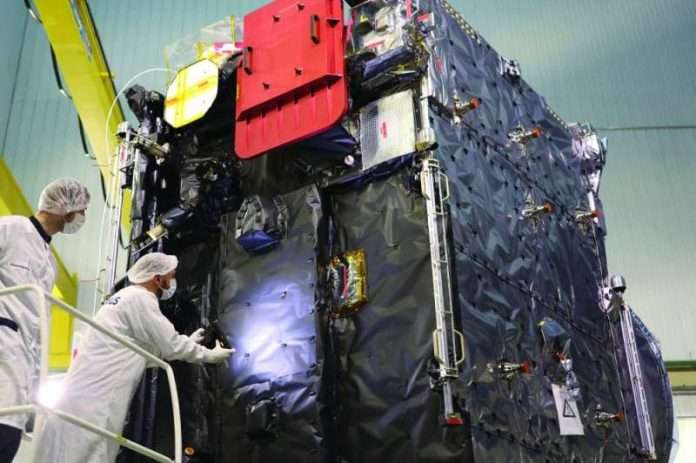Thursday, the European Space Agency launches its space probe, “Juice”, on a journey to Jupiter that will last for eight years, in an effort to find out if there are environments conducive to life on the giant planet of the solar system, and on its icy moons.
The “Ariane 5” rocket is scheduled to take off from Kourou base in French Guiana tomorrow on its penultimate flight (it will be replaced by “Ariane 6”), carrying the probe whose name consists of the initials of the phrase “Jupiter Icy Moons explorer”, reports Al-Rai daily..
The project manager of the “Arianespace” group, Veronique Loiselle, explained in a press conference that the probe, which weighs more than six tons and was designed by the “Airbus” company with its ten scientific tools, will be pushed to a height of 1,500 km before being transferred to orbit.
Then begins the journey of “Joss”, which is expected to arrive in 2031 to its final destination, located about 628 million km from Earth. The probe’s journey will be long and winding because it does not have enough energy to reach Jupiter via a direct path.
And “Joss” will be able to continue his journey, taking advantage of gravity, relying on the use of the force of attraction of other planets, similar to the technology of a catapult. It will fly first over the Moon and the Earth, then over Venus in 2025, then over the Earth again in 2029, before heading towards the giant solar system and its icy moons that Galileo discovered 400 years ago.
The temperature in which the probe will be present during its journey will vary, as it is 250 degrees above zero when it passes over Venus, compared to 230 degrees below zero around Jupiter, as explained by Carole Larigaudry, head of the “Joss” project at the French National Center for Space Studies. What necessitated that it be equipped with a multi-layer insulating cover to ensure that its tools were kept at a constant temperature.
Another challenge is enabling Joss to conserve energy, since sunlight is twenty-five times weaker than it is on Earth. Hence, it was equipped with solar panels with a total area of 85 square meters, which is equivalent to the size of a basketball court, in order to store “the maximum amount of photons.”

















